For a voltage transformer: -
If the applied voltage were very low in frequency i.e. 0.1 Hz, the primary current taken (if the voltage were 120 VAC or 230 VAC) would be several tens of amps and the winding would fry and burn. Nonetheless, what about trying it at 1 VAC? Now, the current (remember we're talking 0.1 Hz) is a couple of hundred milliamps (that's OK) and the flux is just about avoiding saturation (phew) but, a decent flux rate of change is needed to produce the requisite voltage in the secondary and at 0.1 Hz it isn't changing that quick so you get a really small output. No big deal: output voltage and input voltage are still approximately related by the turns ratio but you can't connect to live and neutral anymore because it'll burn.
At some point above (maybe) 35 Hz, you can run full voltage.
Current transformer
Primary current is always defined by the "external circuit" - that's good because now we don't need to worry about saturation or the current getting bigger at lower frequencies. Normally the current transformer has a burden resistor of 1 to 100 ohms and this totally swamps the magnetization impedance; consider, at 50 Hz the mag inductance is 10 uH - this has a reactance of 3.14 milliohms.
If the burden is (say) 10 ohms and the winding ratio is 1:200, referred to the primary, 10 ohms is 40,000 times smaller at 250 micro ohms. The magnetization inductive reactance (3 milliohms) is now swamped by the primary-referred burden of 250 micro ohms. This is what we want - we want the majority of the primary current to pass through the burden via the turns ratio.
At 5 Hz, the burden is still 250 micro ohms but now the magnetization reactance has dropped to 300 micro ohms - see how things are changing - what this means is that the CT at low frequencies can no-longer sustain the maths that underpins it. At 0.5 Hz the output will be negligible because the primary referred burden resistance is totally swamped by the extremely small magnetization impedance.
Equivalent circuits of VT and CT

Comparing CT with VT, you can forget about the primary DC resistance, leakage inductance and core losses (mainly) - all you have is a fat wire (carrying current) going through a hole - it generates some magnetism due to Xm. If the secondary leakage impedances are small compared to the burden, then you can usually forget Xm as well.
What remains is the burden (transformed and transferred to the primary). It is in parallel with Xm and, the burden should normally dominate i.e. it is the lowest impedance because of turns-ratio-squared. So, the majority of the primary current is used to feed current through the burden on the secondary and a small amount of this current (flowing through Xm) generates a by-product called magnetism. The relatively small amount of current that generates magnetism is usually well-below the current that would cause core saturation.
